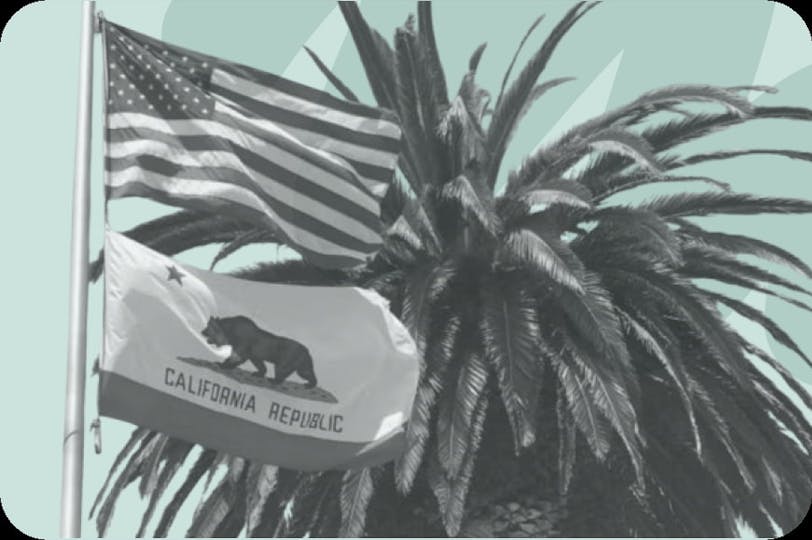
California Climate Accountability Package: SB253, SB261, & SB252
What is the California Climate Accountability Package, and how do SB 253 and SB 261 (SB 219), and SB 252 help the state work towards their environmental goals?
ESG / CSR
Industries



It seems these days like more and more companies are jumping on the bandwagon to achieve net-zero emissions by 2050, and it looks like there just might be an industry that can aid in this challenging process: the FMCG industry, or otherwise known as the industry for fast-moving consumer goods.
👉 How can the FMCG industry help companies and countries across the world achieve their goals of achieving net-zero emissions?
Products with a shelf-life of less than a year are considered non-durable goods. Examples of non-durable consumer goods include milk, soda, or over-the-counter medicines that aren’t good after one year.
Both durable and non-durable consumer goods are a part of the FMCG industry, however – it is worth noting that goods considered to be a part of the FMCG are often classified as non-durable goods, as they work in conjunction with the mission of the FMCG industry.
Products in the FMCG industry have a short shelf life due to their high levels of consumer demand – such as common American household goods like soda, meat, and baked goods.
A good way to determine if a product is a part of the FMCG industry is to determine if the product has a high turnover rate. For instance, items like milk, meat, and eggs are likely to be out-of-stock at the grocery store – meaning that these perishable items qualify as FMCGs.

As previously explained, goods in the FMCG industry are split into three different categories: non-durable goods, durable goods, and services.
Durable goods include objects like napkins or toothpicks – consumer goods that have a long shelf-life and can be kept in the pantry for a long time.
Non-durable goods are common items Americans might keep in the fridge or medicine cabinet such as milk, butter, or aspirin – but these consumer goods often have a shelf-life of under one year.
Finally, services are considered other offerings within the FMCG industry that aren’t a tangible product - such as receiving an annual flu vaccine.
Unknowingly, everyone in the world contributes to the FMCG industry on a daily basis. Everytime you purchase something as trivial as gum or produce for dinner next week – you’re contributing to the FMCG industry. In fact, over half of all consumer spending falls under the FMCG industry – revealing that despite the fact that these purchases are often miniscule, they still can feed an entire industry. This often goes unnoticed due to the fact people are more likely to flaunt their newest iPhone as opposed to the can of soda they grabbed at the convenience store during their lunch break.
Think of the things you buy on a weekly, bi-weekly, or monthly basis just to sustain your home or yourself – all of those items are considered FMCGS. These items can include, but are not limited to, processed snacks such as pastas and cereals, frozen foods, bottled water, packaged baked goods, fresh produce, medicine, cleaning products, cosmetics, toiletries, and office staples like pens and paper.
Given the demand for these day-to-day products is so high, the FMCG is granted with an advantage – but also a burden, as it’s imperative to ensure that the expiration dates on these products are clearly marked to avoid lawsuits. However, the FMCG industry benefits profit wise – as many of these goods will be sold in bulk at wholesale retail places such as Costco, allowing the FMCG to bathe in this low profit margin.
The correlation between the FMCG industry and achieving net-zero emissions is subtle, but fear not – the impact the FMCG industry could have on net-zero targets is still there

Contributing to achieve the global net-zero target means that companies cannot rely solely on carbon offsetting projects or carbon credits – they must alter their business models to reduce carbon emissions.
In this context, many companies will implement a strategy – which is often personalized for the company to ensure utmost success in reducing emissions. This is the point where many companies will seek the assistance of an enterprise like Greenly to assist them in measuring their emissions and how to reduce them effectively.
How can the water bottle you buy on your lunch break or packet of gum you keep in your car, products part of the FMCG Industry, help contribute to achieving a net-zero target?
It’s easy to blame excessive emissions in countries like the U.S. on transportation and the tech industry, but given the fact that FMCGs account for half of all consumer spending – the FMCG could have a massive impact, in addition to helping the average American reduce their carbon footprint.
Think of the carbon footprint created by all FMCGs – their mass production is prone to produce excessive emissions, the packaging on many common FMCGs such as gum, packaged baked goods, and single use utensils often make use of non-recyclable plastic that contributes to landfill, and these goods are constantly being transported on a consistent basis – with no guarantee that they are being delivered in carbon-free emitting vehicles.
The FMCG industry is the epitome of all the things that must change if countries like the U.S. want to make a true effort to reduce their emissions. Even the people most committed to sustainability cannot prevent the need to buy daily necessities such as toilet paper and floss.
Not only do people depend on these consumer goods, or FMCGs, to function on a daily basis – but many of the products in the FMCG industry are now being ordered online, making the rate of emissions caused by FMCGs exceed their previous numbers. Therefore, it is up to the FMCG industry to alter the methods in which their consumer goods are both produced and delivered to help everyone around the world reach their net-zero targets.
What can the FMCG industry do to combat their contribution to excessive emissions?

There’s a lot the FMCG industry could do to help contribute to many company’s goals of achieving net-zero emissions – but one of the overarching issues with the FMCG industry is the dramatic increase in e-commerce for consumer goods.
The FMCG industry has been growing at an unprecedented rate since 2019, and with new cutting-edge services such as same day delivery coming into play – the FMCG is subject to blame for even more plastic waste and excessive emissions. Therefore, one of the first things that the FMCG industry could do is create an incentive for online users seeking consumer goods – such as by offering store credit to those who choose standard shipping over prioritized shipping, or opting to receive all of their desired items in a single shipment even if it means it will take the package longer to get there. This is because standard shipments will allow companies to pack all of their products into a single box instead of several boxes, which will ultimately help to reduce the waste created from FMCGs.
However, the responsibility of rectifying these excessive emissions and waste patterns isn’t just in the hands of the shipping companies. It’s up to the largest companies that manufacture fast-moving consumer goods, such as Nestlé, L'Oréal, and Coca-Cola – to change the way their products are made and delivered to customers, seeing as the shipping companies have no control over the life-cycle of a product. In other words, consumer goods need to be changed – and the only way that will happen is if these companies realize the value in becoming a net-zero company.
At Greenly, we’re always saying how we believe small actions can make a big difference – and that the fight against climate change is a collective effort. If the FMCG makes the changes necessary to adhere to a net-zero target world – they could prove our motto more than right.

If reading this article about how the FMCG industry can contribute to achieving net-zero emissions has made you interested in reducing your carbon emissions to further fight against climate change – Greenly can help you!
Greenly can help you make an environmental change for the better, starting with a carbon footprint assessment to know how much carbon emissions your company produces.